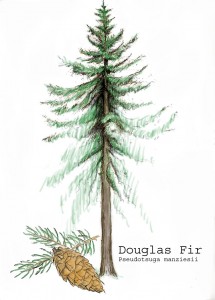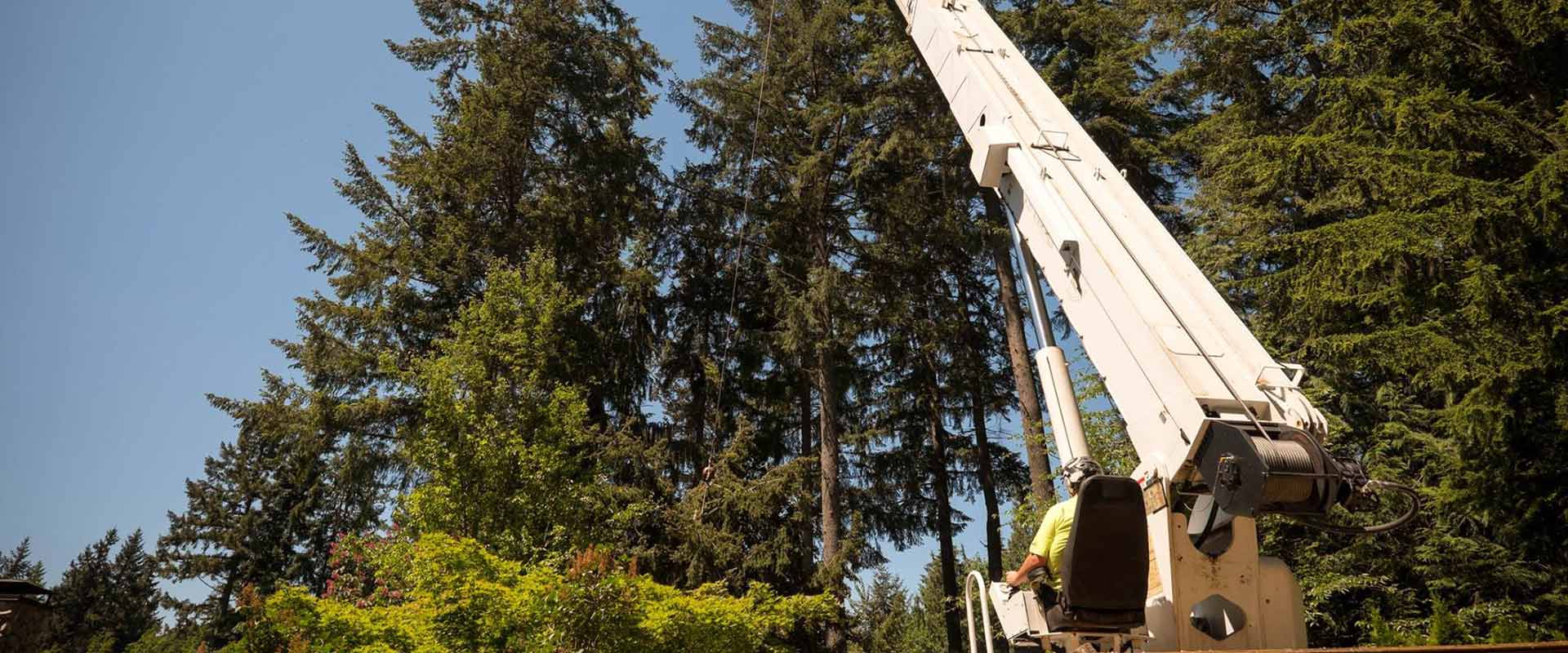The Douglas fir, so tall and majestic in appearance with its tall straight trunk and dense, dark blue-green canopy. It appears with an almost sorrowful grace as the gentle winds of summer blow through its boughs and down-turned foliage.
But in winter, when the winds blow stronger and more often, only then do you see its strength and will to live through the ages. A length of life that is unfathomable to us short-lived bipeds.
There is no other tree that so clearly and nobly defines the Northwest as the Douglas fir. It is for this reason that this particular species inhabits a groove of its own in my heart.

Interesting facts on Douglas Firs:
- The thick bark of an old-growth Douglas fir protects it from fire. These more mature trees can often survive forest fires, even though their bark may be blackened and charred.
- Douglas fir is considered the second tallest tree in North America, after the Redwood (Old growth Douglas Firs reach over 300’)
- Douglas fir comprises most of the old-growth forests of the western United States, and provides the largest percentage of wood harvested in the U.S.
- The Douglas fir is sometimes known as the “tree of 1000 uses”, and provides a resource for more products than any other tree in the world.
- The Douglas fir aids in preventing soil erosion by holding soil to the ground surface with it’s shallow roots. This can provide watershed protection for local environments, but the shallow root system also creates a higher likelihood for single-standing forest firs to uproot under high winds.
Defining Douglas fir from others
The Douglas fir is easy to define from other trees, as it has a very distinctive soft cone with broad scales and ribbon-shaped bracts that looks like a 3 forked tongue. It is this trident shaped bract that sets it apart – as no other trees has a cone like it.
How did it get its name?
The Douglas fir gets its name from David Douglas, a Scottish botanist and explorer who made what was considered “one of the great botanical explorations of a heroic generation” when traveling to the Pacific Northwest in 1824.
Although you and I give Mr. Douglas credit, the scientific name Pseudotsuga menziesii name gives credit to another great botanist of the Pacific Northwest, Archibald Menzies. Though Mr. Douglas was not without due credit in the scientific community, as there are over eighty species that bear the name douglasii.
Caring for a Douglas fir
The Douglas fir requires very little tree care to maintain as a safe and beautiful part of your backyard environment. The first thing to do is to have an ISA Certified Arborist and Certified Tree Risk Assessor evaluate the tree for any defects.
If no defects are found and the tree is in good health, then it is best to remove the deadwood and any defective branches. This is what we at Eastside Tree Works call a Structure Prune.
For the larger more mature Douglas firs, this needs to be done every five to ten years. As for the younger Douglas firs, a structure prune is recommended for health every three to five years.
I highly recommend avoiding “windsailing” your Douglas fir outside of very specific scenarios, as it greatly reduces the amount of “food” the tree can produce and makes it more susceptible to diseases that it could otherwise fend off.

